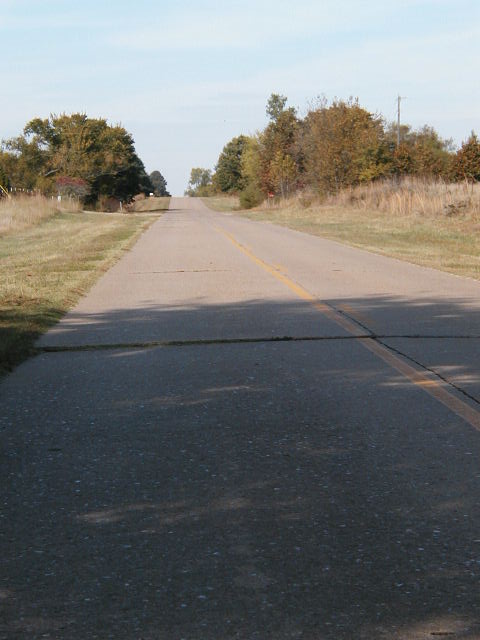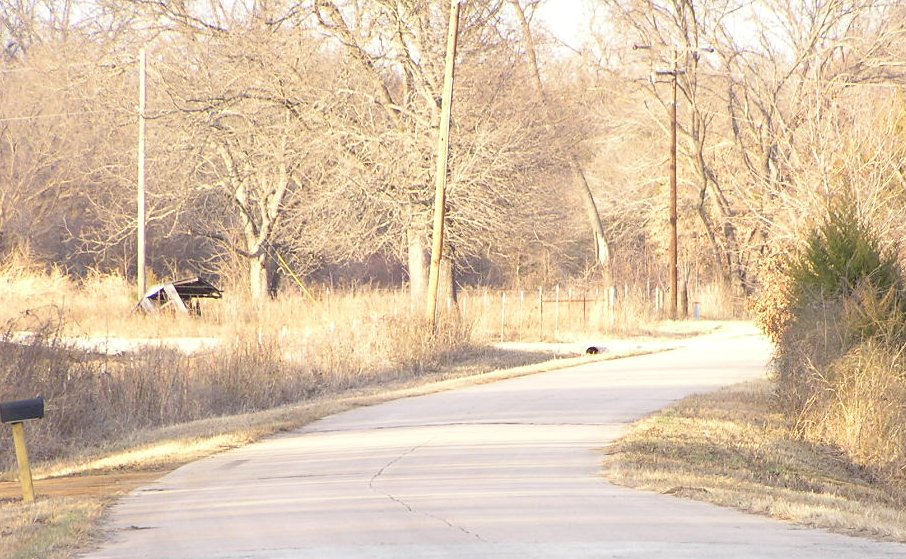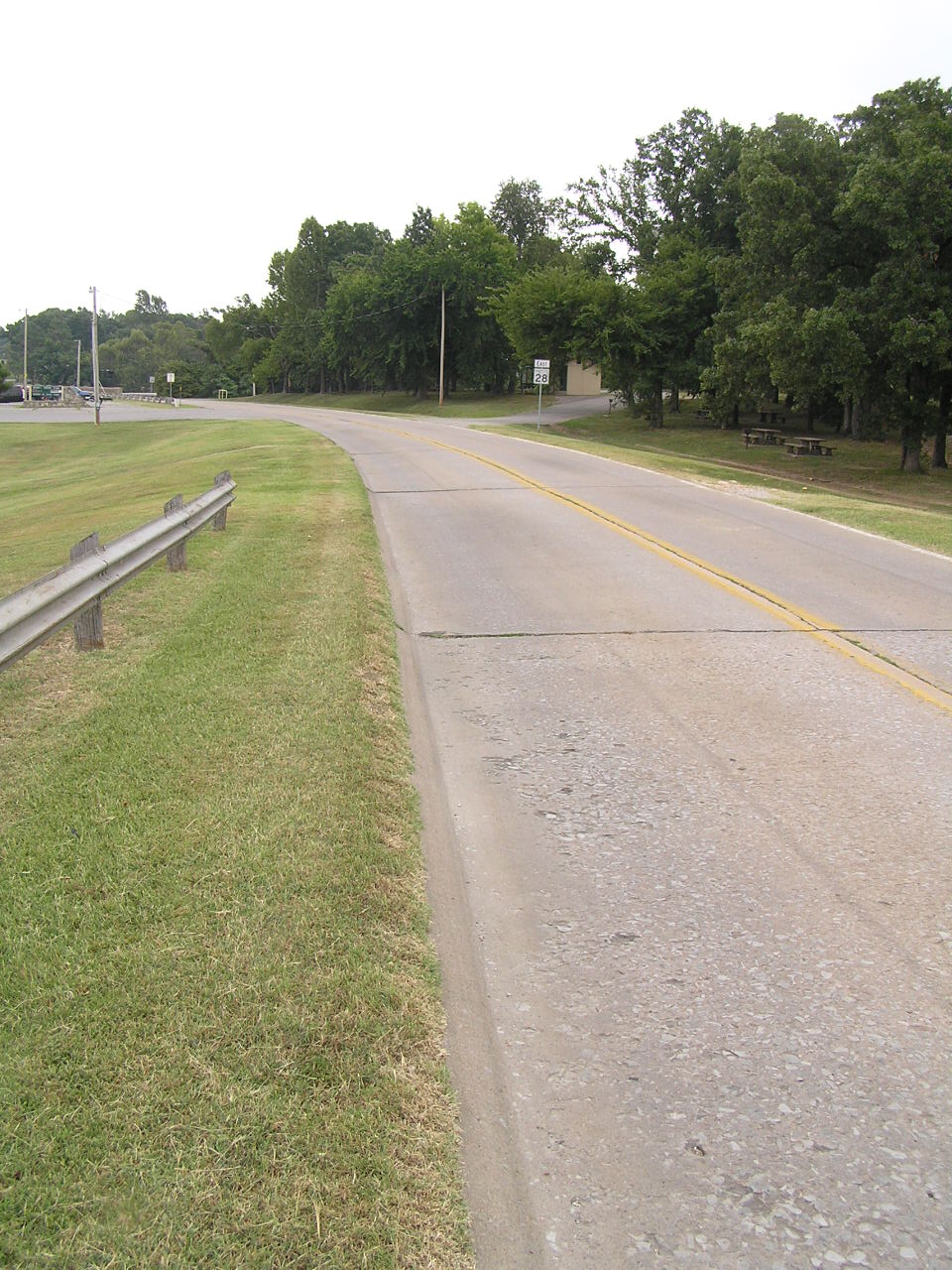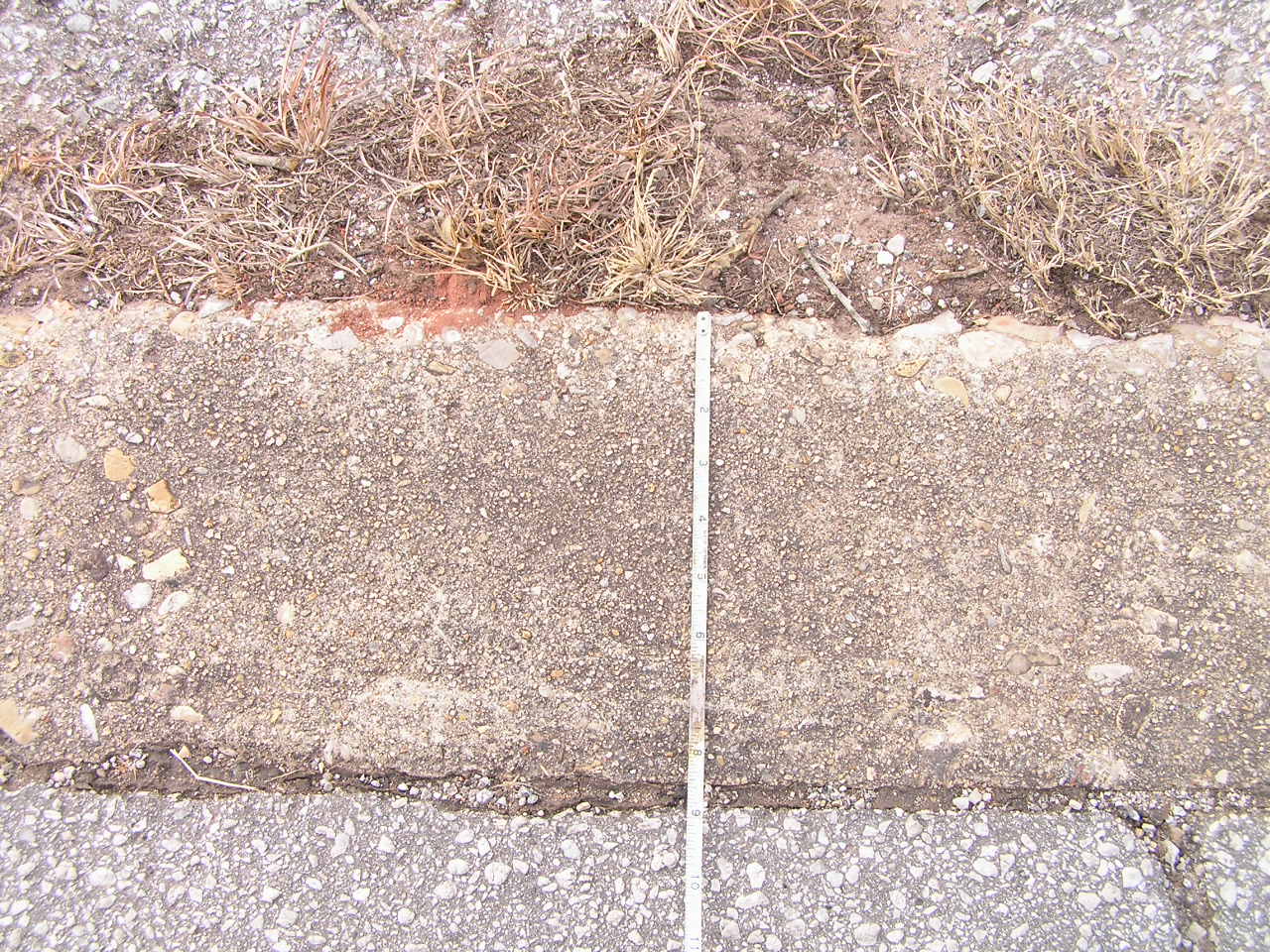 Bates Standard Pavement
Bates Standard Pavement 
 Bates Standard Pavement
Bates Standard Pavement 
Throughout these pages, you will see many references to "Bates standard pavement." The following is an attempt at a general explanation of what exactly Bates pavement is, why we find it so fascinating, and how to go about identifying it yourself.
Basically, Bates standard pavement is the type of paving that was most often used for highways in what we at the Historic Infrastructure Group consider to be the "classic" highway period. It comes in several forms, but we will cover only the two most prolific here.
Bates Standard

The most popular type of old pavement we have encountered on old highway alignments is this concrete paving standard; we used to refer to it by several different names, but we were clued in to the proper terminology by a scan in Jim Ross's excellent book Oklahoma Route 66. In one of his introductory chapters, Mr. Ross included a scan of the paving standard sheet from a set of plans for a 1928 US 66 project near Arcadia, which showed not only the specifications for the pavement, but gave it a name, "Bates Type."

Bates standard concrete is characterized by a total roadway width of 18 feet, a meandering longitudinal expansion joint, and 50 foot spaced lateral expansion joints. According to the standard page in Mr. Ross's book, and confirmed by some bypassed pavement we have been able to examine up close, the meandering center crack was deliberately caused and allowed to form on its own. Instead of creating a strictly delineated central joint at the surface by forming and pouring each lane separately, the full width slab was poured as one piece, but a 3" tall 18 gauge corrugated metal strip was placed upright down the center of the panel before it was poured. Because the concrete was poured to be approximately 6" thick, the metal strip was covered, but it created a natural weak spot, and the slab would eventually fracture roughly along the centerline, creating a naturally formed longitudinal expansion joint.

This meandering center joint and the 50 foot expansion joints, along with the particular color of the concrete mix that was generally used, gives Bates pavement a singular look and feel that makes old highway routes paved in the standard instantly identifiable. Because the expansion joints are spaced relatively far apart instead of the shorter spacing that became popular later, a driver also gets to experience a wonderful "click-click" sound as they drive along the road. Many of the highways we have encountered that are Bates paved have held up remarkably well, which we believe to be the product of a combination of the paving standard and the way in which the roadbeds were prepared before paving.

Another characteristic of Bates standard paving that is occasionally encountered is the particular type of curbing shown above. Usually, the curbs tend to appear on hills, which leads us to believe that they were meant to help with drainage, possibly to direct water down the pavement instead of along the small earthen shoulders that were commonly used with the standard. There is also a characteristic type of drain, sometimes described as an "eyebrow," that can be encountered on Bates paved alignments.
Modified Bates

The other standard given on the plan sheet in Mr. Ross's book is this, and we have encountered it in several places, but relatively few compared to the number of instances of Bates Standard pavement. This is referred to on the plan sheet as "Modified Bates Type," and it shares many characteristics with the Bates Standard paving, with a few major differences. The most obvious difference is that the wearing surface of the roadway is asphalt instead of concrete; the majority of the underlying pavement is still concrete, but there is a 2" thick layer of asphalt atop the concrete on the main traveled portion of the roadway.

The other major difference is that the concrete base has no longitudinal expansion joint; no galvanized strip was placed to create a crack, and no center joint was specified. The 50' spaced lateral joints are still there, but they tend to be harder to detect since the asphalt has generally deteriorated over the entire surface and it is sometimes difficult to tell a general surface crack from that caused by an underlying expansion joint.

Another defining characteristic of Modified Bates paving is the 9" wide "curbs" at the edges of the roadway. These are not actually curbs, as they are level with the road surface; they are actually the edges of the concrete substrate, which was specified to be brought up to be the wearing surface at the outer edges of the road instead of asphalt. We are unsure as to why this was done, but we do know from the standard page and some other resources that the edges of both Bates standard pavements were deliberately thicker vertically than the central portions of the roadway, because the edges were where the most stress was anticipated.
Identifying Bates Pavement under modern overlays
Bates standard pavement was used almost universally on the early highways of Oklahoma, and much of it survives to this day on older alignments, sometimes buried under untold layers of asphalt overlays. It is possible for the trained observer to note a few telltale signs and know for certain that the classic Bates standard pavement is hiding under the road upon which they are traveling, ensuring that the ride is smooth and solid.
The telltales are both visual and tactile, but they all involve looking for certain types of imperfections in the asphalt surface. The first possible sign is a meandering central crack in the asphalt; it will sometimes travel almost straight down the center of the road, and other times it will meander several feet from one side to the other due to irregular propagation through the layers of asphalt. The second likely telltale is an edge crack at approximately 9 feet lateral spacing from the center crack; this is where the edge of the Bates concrete ends, creating a stress on the overlays that again propagates sometimes erratically to the surface. If you observe these two phenomena, look for the third and sometimes easiest to discern: the 50 foot spaced expansion joints. The expansion joints tend to propagate fairly clearly and linearly up through asphalt overlays and are often prominent even when the center and edge cracks are almost invisible. If you find yourself traveling down a highway or other road and feel or hear a faint "click-click," start looking for the center and edge cracks; you may be on an old Bates paved alignment. If you see the expansion joints and edge cracks, but no center crack, you may be on Modified Bates.
If you find Bates pavement between towns, you are very probably on an old highway alignment; however, we believe it was used for much more than highways within towns. Today some major city streets are paved to current highway standards, and it seems that this was also the case in the 1920s and 30s. Your humble author has found evidence that Bates Standard pavement was used all over Tulsa, as several of the section roads which are now four lane streets have obvious Bates pavement telltales in their central two lanes. Finding old pavement under the streets that were once highways was enough of a surprise given the amount of reconstruction that has occurred, but finding it under streets that were never highways shocked us, and proved to us that the Bates standard was used by the cities then just as highway standards are used today. We assume that Oklahoma City, Enid, Lawton, Edmond, and many other large cities have Bates pavement under some of their major streets. We encourage readers to do some exploring and find out for themselves just how much history is under their wheels.
Conclusions
Given all the information above, just why do we find Bates pavement so fascinating? Well, one factor is obviously that it was the paving standard used for most of the old highway alignments we have found, and that makes it incredibly useful both as a road surface and as a clue to finding old alignments. Another reason we find Bates pavement special is its durability; we know of many places where the original Bates concrete, over 80 years old, is in almost pristine condition today. In some of these cases, the road was bypassed long ago and the pavement thus received minimal maintenance, but it is still in remarkable condition. In a few cases, the pavement is still the wearing surface of a modern highway, it has therefore received at least some maintenance, and it is smoother than many modern concrete highways that are much younger.
The above durability statements, however, only apply to the standard Bates pavement; the Modified Bates pavement has in general not held up very well at all, mainly due to the asphalt deteriorating. In places where we have found bare Modified Bates, it can sometimes be almost undriveable due to the asphalt, but the concrete base is still in excellent condition. This is another reason we find the two Bates pavements so fascinating; they give us a great example of the relative durability of asphalt versus concrete, and a reason why we believe most roads should be concrete.
In any case, whether Modified or Standard Bates underlies a modern road, the modern road tends to be generally smooth and solidly placed on the ground, due to the careful preparation of the roadbed and the stability of the Bates concrete base. Sometimes the expansion joints can create small "speed bumps" if the overlaying asphalt is not laid down or maintained properly, but these are easily milled down and the surface between the joints is generally very smooth due to the stability of the base.
This is the last thing we find so fascinating about the Bates standards; they were developed in the early twentieth century, after only a few years of research using cars and trucks much smaller and lighter than those typical today, but they are apparently some of the best standard pavings ever developed. One only has to compare a modern road with Bates paving underneath with one graded later, and the difference is obvious. We hope you enjoyed this information on the classic paving standards of the twenties and thirties. Thanks for reading.
Back to Introduction and General Information
Back to Detailed Routes Index
Back to Main Page
State Highway Shields created by Ken Parker of Oklahoma Bridge & Highways Group.